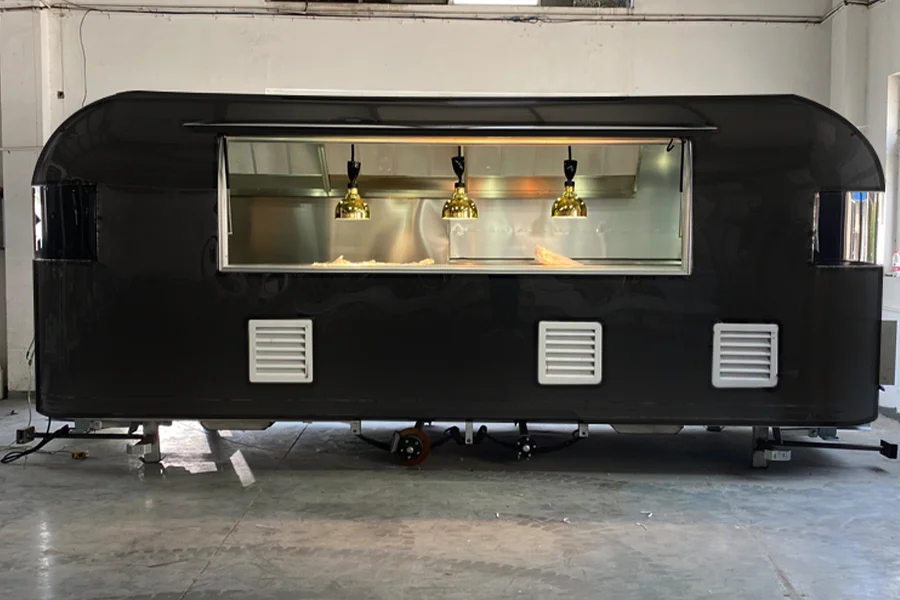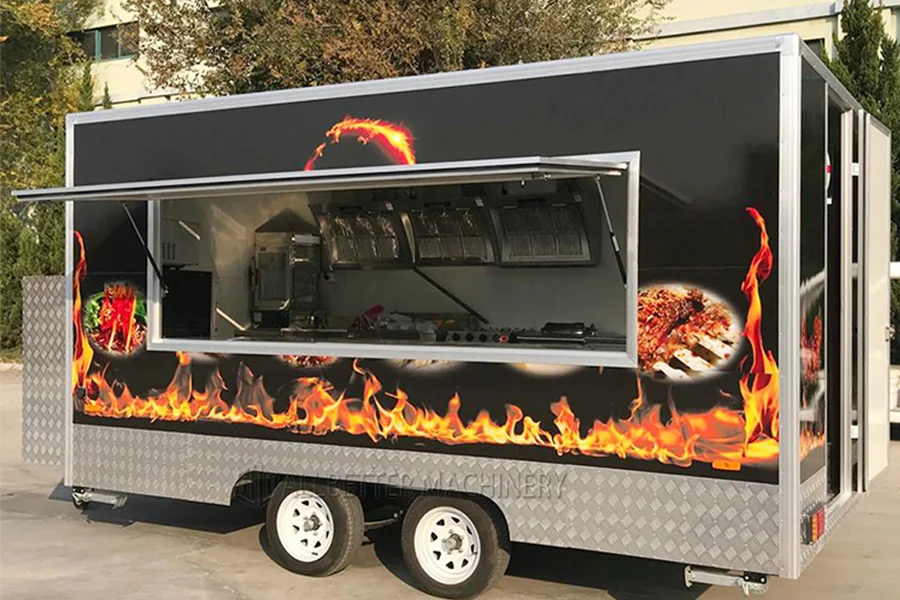As the name suggests, food trucks are a type of truck or trailer that can be converted to a portable restaurant. One side is usually used as a counter over which freshly made food can be served directly to customers. Starting a food truck business is an exciting prospect, and this guide hopes to make it easier for new businesses to enter this trending market.
Table of Contents
Food truck market share and demand
Factors to consider before buying a food truck
Features to look out for on food trucks
Target market for food trucks
Food truck market share and demand
The food truck market share was valued at $4.11 billion in 2021. Emerging trends in the food truck industry show that 60% of millennials tend to prefer food trucks over brick-and-mortar restaurants.
Major restaurants are joining this trend and branching out by placing food trucks in prime locations to maximize their customer base and improve convenience. It has been noted that 40% of major restaurants have set up food trucks in strategic locations since 2015, while as many as 30% of restaurants have abandoned traditional models for models that meet consumer expectations, such as food trucks.
Factors to consider before buying a food truck

The cost of starting up
The cost of starting a food truck business varies, depending on the truck and the accessories it comes with. Food truck costs typically range from $50,000 – $250,000. New and used food trucks are both viable options, although used trucks, while being more affordable initially, may have higher maintenance costs. On the other hand, new and professionally designed food trucks may be more expensive, but are customizable and easy to maintain.
Regulations, permits, and licenses
As with all businesses, permits and licenses should be obtained before the food truck starts serving the public. And while a food truck may be an extension of an already existing business, it still needs to adhere to government regulations regarding selling food to the public. This includes obtaining licenses of operation that could be location dependent.
Food marketing strategy
Marketing is essential to bring in new customers. Those who intend to enter the food truck business should ideally have a marketing strategy in place before deciding on which truck or trailer to purchase. For example, having one’s truck designed to match a niche product could allow the business to create an appealing image. This could translate well to a presence on social media, which is one of the best ways to grow awareness of one’s brand.
Simplicity and uniqueness
With consumers always keen for new experiences, those entering the food truck business should consider offering something simple yet unique. Starting with the food truck, it should have a clear identity to allow it to stand out from competing businesses. This can be done by designing it with a particular theme that resonates with specific clientele, and by focusing on only a select number of dishes that are done really well.
Features to look out for on food trucks

Order window and awning
An order window is always found on one side of the food truck. It is easily converted to a counter where the vendor serves the customers. In addition to this is an awning attached above the top part of the order window. It is mainly made of canvas and helps provide customers with shade from the sun or shelter for the rain.
Refrigeration
It is essential to have a refrigeration unit to keep ingredients cool. Common foods to be refrigerated are meat, milk, fruits, juice, and eggs. Having a working refrigerator on board guarantees customers will be served fresh produce.
Wi-Fi
Wi-Fi connectivity is a great way to entertain customers, especially when there are seats and tables around the food truck. Internet connectivity will be a good addition when customers want to sit nearby and enjoy their meals.
Fryers and cooktops
A food truck must come with the essential cooking setup and utensils. It may be that one needs cooktops and fryers for making food at the venue, while some food trucks could also have griddles, grills, hot plates, and stoves.
Prep table
The prep table is used to prepare meals before they’re cooked. They are between 3 and 6 feet long and come with storage containers. They allow the vendor to chop and prepare ingredients such as vegetables for pizza or cheese for making sandwiches conveniently.
Target market for food trucks
The food truck industry is expected to grow at a compound annual growth rate of 6.8% to reach $6.63 billion by 2028. This growth is driven by a change in meal preference for consumers aged between 16 and 34 who enjoy the convenience and diverse options that food trucks typically offer. Europe had the largest market share of food trucks in 2020 at 29% due to international cuisine festivals. However, the Asia Pacific region is expected to have the fastest growth in food truck sales by 2028. Consumers in countries such as Japan, China, and South Korea have a strong interest in street food, which will fuel this growth.
Conclusion
The food truck industry is popular with the younger generation and is set to see significant growth over the coming years. Knowing your business needs is essential for those considering branching out into this exciting trend. In order to help make the decision to join this industry easier, this guide has looked at the essential factors businesses should consider before investing in a food truck and the kinds of features that are available. Visit the Chovm.com food trucks section for more information.





 বাংলা
বাংলা Nederlands
Nederlands English
English Français
Français Deutsch
Deutsch हिन्दी
हिन्दी Bahasa Indonesia
Bahasa Indonesia Italiano
Italiano 日本語
日本語 한국어
한국어 Bahasa Melayu
Bahasa Melayu മലയാളം
മലയാളം پښتو
پښتو فارسی
فارسی Polski
Polski Português
Português Русский
Русский Español
Español Kiswahili
Kiswahili ไทย
ไทย Türkçe
Türkçe اردو
اردو Tiếng Việt
Tiếng Việt isiXhosa
isiXhosa Zulu
Zulu